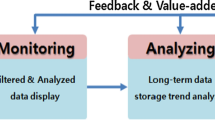Abstract
When data service is not available, it is almost impossible for smartphones to receive data files. In this paper, we propose a system, called RoV, which can send data files to a smartphone via voice calls instead of data service. In this system, data files are encoded into acoustic signals by the sender, transmitted to the receiver through the normal voice channel, and decoded by the receiver at the end. There are two main challenges for the system: (1) the speaker of a smartphone is usually not accessible during a phone call, making it difficult to directly use a smartphone as the sender; and (2) the voice channel is frequency sensitive, and simple modulation methods do not work well. For the first challenge, RoV simulates a Bluetooth headset to inject voice signals to the voice channel without rooting the smartphone. For the second challenge, RoV utilizes the dual-tone multi-frequency (DTMF) method for encoding and decoding in a suitable frequency range. In addition, we introduce new break symbols in DTMF, which can avoid the synchronization problem and also lead to a simple decoding algorithm. We implement RoV and evaluate its performance with experiments.












Similar content being viewed by others
References
Cai C, Zhe C, Luo J, Pu H, Hu M, Zheng R (2021) Boosting chirp signal based aerial acoustic communication under dynamic channel conditions. IEEE Trans Mob Comput. https://doi.org/10.1109/TMC.2021.3051665
Dong C, Shen Y, Qu Y, Wang K, Zheng J, Wu Q, Wu F (2021) Uavs as an intelligent service: boosting edge intelligence for air-ground integrated networks. IEEE Netw 35(4):167–175
Eichelberger M, Tanner S, Voirol G, Wattenhofer R (2019) Receiving data hidden in music. In: 20th International Workshop on Mobile Computing Systems and Applications (HotMobile)
https://en.wikipedia.org/wiki/telecommunications_industry_in_china, TelecommunicationsindustryinChina
Lee H, Kim TH, Choi JW, Choi S (2015) Chirp signal-based aerial acoustic communication for smart devices. In: IEEE Conference on Computer Communications (INFOCOM)
Lu L, Yu J, Chen Y, Wang Y (2020) Vocallock: Sensing vocal tract for passphrase-independent user authentication leveraging acoustic signals on smartphones. Proceedings of ACM Interactive Mobile Wearable Ubiquitous Technologies 4(2):1–24. https://doi.org/10.1145/3397320
Madhavapeddy A, Sharp R, Scott D, Tse A (2005) Audio networking: the forgotten wireless technology. IEEE Pervasive Comput 4(3):55–60
Nandakumar R, Chintalapudi KK, Padmanabhan V, Venkatesan R (2013) Dhwani: secure peer-to-peer acoustic NFC. In: Annual Conference of the Special Interest Group on Data Communication (SIGCOMM)
Nittala AS, Yang XD, Bateman S, Sharlin E, Greenberg S (2015) Phoneear: interactions for mobile devices that hear high-frequency sound-encoded data. In: Engineering Interactive Computing Systems (EICS)
Novak E, Tang Z, Li Q (2019) Ultrasound proximity networking on smart mobile devices for IoT applications. IEEE Internet Things J 6(1):399–409
Novak E, Tang Y, Hao Z, Li Q, Zhang, Y (2015) Physical media covert channels on smart mobile devices. In: ACM International Joint Conference on Pervasive and Ubiquitous Computing (UbiComp)
Putz F, Álvarez F, Classen J (2020) Acoustic integrity codes: Secure device pairing using short-range acoustic communication. In: 13th ACM Conference on Security and Privacy in Wireless and Mobile Networks. https://doi.org/10.1145/3395351.3399420
Qian W, Ren K, Man Z, Tao L, Koutsonikolas D, Lu S (2016) Messages behind the sound: real-time hidden acoustic signal capture with smartphones. In: 22nd Annual International Conference on Mobile Computing and Networking (MobiCom)
Roy N, Hassanieh H, Roy Choudhury R (2017) Backdoor: Making microphones hear inaudible sounds. In: 15th Annual International Conference on Mobile Systems, Applications, and Services (MobiSys)
Wang Y, Zhu X, Han H (2021) Chirpmu: Chirp based imperceptible information broadcasting with music. In: IEEE/ACM International Symposium on Quality of Service (IWQoS)
Wu Q, Ding G, Xu Y, Feng S, Du Z, Wang J, Long K (2014) Cognitive internet of things: a new paradigm beyond connection. IEEE Internet Things J 1(2):129–143
Yi S, Qin Z, Carter N, Li Q (2017) Wearlock: Unlocking your phone via acoustics using smartwatch. In: IEEE International Conference on Distributed Computing Systems (ICDCS)
Zhang B, Zhan Q, Chen S, Li M, Ren K, Wang C, Ma D (2014) Priwhisper: Enabling keyless secure acoustic communication for smartphones. IEEE Internet Things J 1(1):33–45
Zhang L, Zhu X, Wu X (2019) No more free riders: Sharing wifi secrets with acoustic signals. In: International Conference on Computer Communication and Networks (ICCCN)
Zhang Q, Wang D, Zhao R, Yu Y, Shen J (2021) Sensing to hear: Speech enhancement for mobile devices using acoustic signals. Proceedings of ACM Interactive Mobile Wearable Ubiquitous Technologies 5(3):1–30. https://doi.org/10.1145/3478093
Zhu X, Tang S (2021) A branch-and-bound algorithm for building optimal data gathering tree in wireless sensor networks. INFORMS J Comput. https://doi.org/10.1287/ijoc.2020.1012
Acknowledgements
The authors would like to thank the reviewers for their constructive comments. This work was supported by the National Natural Science Foundation of China (61972199).
Author information
Authors and Affiliations
Corresponding author
Additional information
Publisher's Note
Springer Nature remains neutral with regard to jurisdictional claims in published maps and institutional affiliations.
Rights and permissions
About this article
Cite this article
Zhu, X., Wang, Y. & Qin, Z. RoV: receiving files from voice calls using dual-tone multi-frequency method. J Supercomput 78, 7304–7320 (2022). https://doi.org/10.1007/s11227-021-04168-7
Accepted:
Published:
Issue Date:
DOI: https://doi.org/10.1007/s11227-021-04168-7




